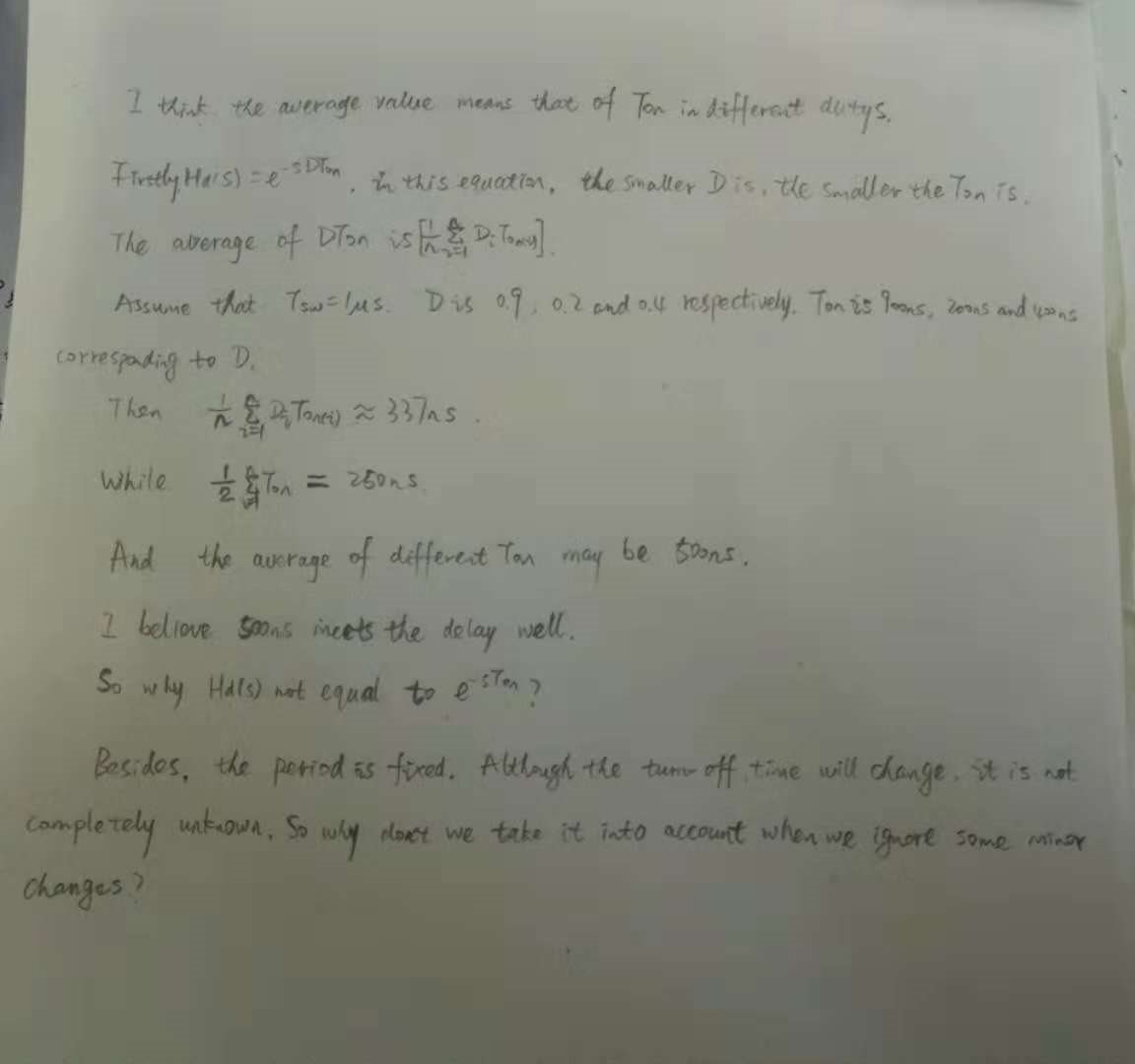Hi,
Recently, I have read an application report, named "D-CAP2TM Frequency Response Model based on frequency domain analysis of Fixed On-Time with Bottom Detection having Ripple Injection"(SLVA546). In this report, it writes "The Duty ratio cannot change while fixed on-time, so it should be considered as delay expressed as Hd(s)=e^(-sTon/2)". Can you explain to me why is it like this? Second, I am wondering how to get poles and zeros through this transfer function?slva546.pdf


